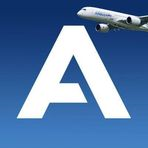EASA's Directive: A Safety Net for Airbus A350-1000 Engines
September 6, 2024, 4:09 am

Location: Germany, North Rhine-Westphalia, Cologne
Employees: 501-1000
Founded date: 2003

Location: China, New Territories, Tung Chung
Employees: 10001+
Founded date: 1946

Location: United Kingdom, England, London
Employees: 10001+
Founded date: 1906
Total raised: $695.52M
In the world of aviation, safety is paramount. The recent engine fire on a Cathay Pacific Airbus A350-1000 has sent ripples through the industry. The European Union Aviation Safety Agency (EASA) has stepped in, ordering inspections on the A350-1000 engines. This move is not just a precaution; it’s a necessary response to a serious incident.
On September 5, 2024, EASA announced its directive following an alarming event. A Cathay Pacific flight experienced an engine fire shortly after takeoff. The fire was quickly extinguished, but the implications were significant. The agency's decision to mandate inspections is a clear signal that safety cannot be compromised.
The A350-1000, powered by Rolls-Royce XWB-97 engines, is a marvel of modern engineering. It can carry nearly 500 passengers and travel over 16,000 kilometers. However, this incident has cast a shadow over its reputation. EASA's directive affects 86 aircraft worldwide, focusing on potential issues with high-pressure fuel hoses. These hoses are critical components. A failure can lead to catastrophic consequences.
EASA's actions come at a time when regulatory scrutiny is heightened. The aviation industry is still reeling from the Boeing safety crisis. Regulators are under pressure to act decisively. EASA's Executive Director, Florian Guillermet, faces a pivotal moment. His leadership will be tested as the agency navigates this complex situation.
The inspections must be conducted within 3 to 30 days. This timeline is crucial. Airlines need clarity and guidance. Cathay Pacific has already grounded 48 A350s for checks. Other airlines are following suit, ensuring their fleets are safe. The industry is interconnected. A problem in one area can ripple through the entire network.
Rolls-Royce is also responding. The company has launched a one-time precautionary inspection program. They are working closely with EASA to address the concerns. The collaboration is essential. It shows a commitment to safety and transparency. Airlines are looking for answers. They want to know which planes are affected and how quickly repairs can be made.
Communication is key. Airlines have expressed frustration over the lack of information. They face questions from passengers, and uncertainty breeds anxiety. The stakes are high. Public confidence in air travel is fragile. A single incident can shake trust. EASA's directive aims to restore that trust.
The A350-1000 is a competitor to Boeing's 787 Dreamliner. It has garnered significant orders, with over 1,300 A350s ordered globally. The aircraft represents a leap forward in efficiency and comfort. However, incidents like this can tarnish its image. The aviation market is competitive. Airlines must reassure their customers that safety is their top priority.
The incident has also impacted stock prices. Shares in Airbus and Rolls-Royce fell following the announcement. Investors are wary. They know that safety issues can lead to costly groundings and repairs. The financial implications are significant. Airlines must balance operational efficiency with safety compliance.
As the inspections unfold, the industry will be watching closely. EASA's directive is a reminder that safety is non-negotiable. The agency's proactive stance is commendable. It reflects a commitment to protecting passengers and crew. The aviation landscape is evolving. Regulatory bodies must adapt to new challenges.
The A350-1000 incident is a wake-up call. It highlights the importance of rigorous safety checks. The aviation industry must learn from this experience. Transparency and communication will be vital moving forward. Airlines, manufacturers, and regulators must work together.
In conclusion, EASA's order for inspections on Airbus A350-1000 engines is a critical step in ensuring aviation safety. The incident involving Cathay Pacific serves as a stark reminder of the potential dangers in the skies. As the industry navigates this challenge, the focus must remain on safety, communication, and collaboration. The stakes are high, but the commitment to passenger safety must be unwavering. The skies should be safe for all who travel.
On September 5, 2024, EASA announced its directive following an alarming event. A Cathay Pacific flight experienced an engine fire shortly after takeoff. The fire was quickly extinguished, but the implications were significant. The agency's decision to mandate inspections is a clear signal that safety cannot be compromised.
The A350-1000, powered by Rolls-Royce XWB-97 engines, is a marvel of modern engineering. It can carry nearly 500 passengers and travel over 16,000 kilometers. However, this incident has cast a shadow over its reputation. EASA's directive affects 86 aircraft worldwide, focusing on potential issues with high-pressure fuel hoses. These hoses are critical components. A failure can lead to catastrophic consequences.
EASA's actions come at a time when regulatory scrutiny is heightened. The aviation industry is still reeling from the Boeing safety crisis. Regulators are under pressure to act decisively. EASA's Executive Director, Florian Guillermet, faces a pivotal moment. His leadership will be tested as the agency navigates this complex situation.
The inspections must be conducted within 3 to 30 days. This timeline is crucial. Airlines need clarity and guidance. Cathay Pacific has already grounded 48 A350s for checks. Other airlines are following suit, ensuring their fleets are safe. The industry is interconnected. A problem in one area can ripple through the entire network.
Rolls-Royce is also responding. The company has launched a one-time precautionary inspection program. They are working closely with EASA to address the concerns. The collaboration is essential. It shows a commitment to safety and transparency. Airlines are looking for answers. They want to know which planes are affected and how quickly repairs can be made.
Communication is key. Airlines have expressed frustration over the lack of information. They face questions from passengers, and uncertainty breeds anxiety. The stakes are high. Public confidence in air travel is fragile. A single incident can shake trust. EASA's directive aims to restore that trust.
The A350-1000 is a competitor to Boeing's 787 Dreamliner. It has garnered significant orders, with over 1,300 A350s ordered globally. The aircraft represents a leap forward in efficiency and comfort. However, incidents like this can tarnish its image. The aviation market is competitive. Airlines must reassure their customers that safety is their top priority.
The incident has also impacted stock prices. Shares in Airbus and Rolls-Royce fell following the announcement. Investors are wary. They know that safety issues can lead to costly groundings and repairs. The financial implications are significant. Airlines must balance operational efficiency with safety compliance.
As the inspections unfold, the industry will be watching closely. EASA's directive is a reminder that safety is non-negotiable. The agency's proactive stance is commendable. It reflects a commitment to protecting passengers and crew. The aviation landscape is evolving. Regulatory bodies must adapt to new challenges.
The A350-1000 incident is a wake-up call. It highlights the importance of rigorous safety checks. The aviation industry must learn from this experience. Transparency and communication will be vital moving forward. Airlines, manufacturers, and regulators must work together.
In conclusion, EASA's order for inspections on Airbus A350-1000 engines is a critical step in ensuring aviation safety. The incident involving Cathay Pacific serves as a stark reminder of the potential dangers in the skies. As the industry navigates this challenge, the focus must remain on safety, communication, and collaboration. The stakes are high, but the commitment to passenger safety must be unwavering. The skies should be safe for all who travel.
